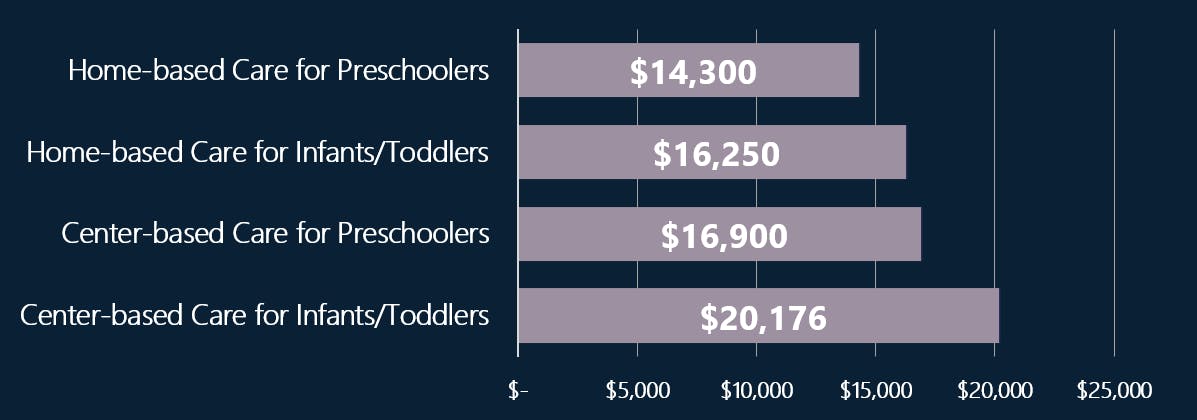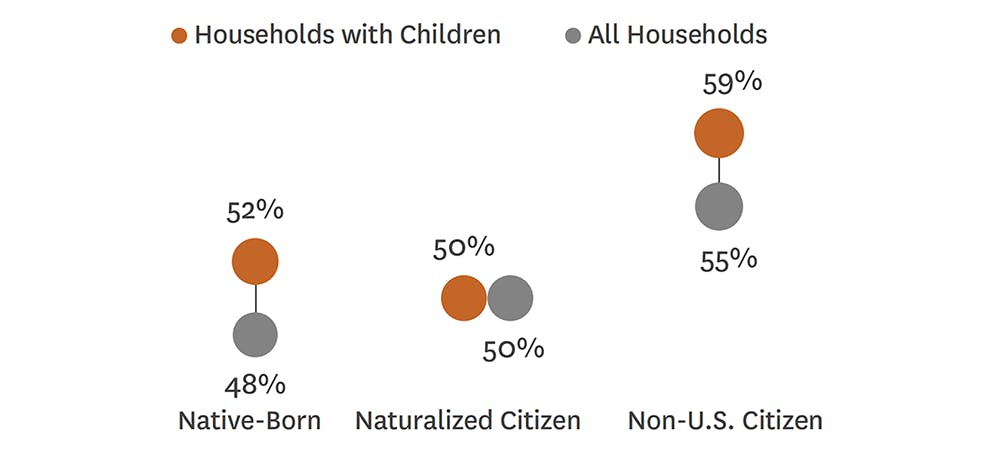

Addressing Two of NYC’s Most Pressing Affordability Crises: Housing & Child Care
Insights
June 28, 2023
By: Rimsha Khan, Julie Kronick, & Robert Guttersohn
We are in the final stretch of budget negotiations for New York City and it remains especially important to consider the reality of families living here. Currently, the proposed budget leaves out important investments for child care and housing, even as families are struggling to afford both. Access to child care remains difficult for many families and tonight nearly 29,000 children will sleep in NYC shelters even as the city recently passed the largest stabilized-rent increase in a decade. As put by the New York Times earlier this spring, “half of NYC households can’t afford to live here”, and according to CCC’s data, housing and child care are two of NYC families’ biggest expenses, proving that solutions for affordability in housing and child care are key to well-being across the city and must be a focal point in the budget. As the data suggests, a majority of families with children may be spending a majority of their income on just these two needs.
CCC data sets show communities most burdened by the cost of child care also tend to be rent burdened
Hover over or tab through community districts to retrieve district-level data.
The cost of child care is unaffordable for most families
Child care is one of the most important services needed for NYC families with children. In addition to direct benefits for children, it helps parents and caregivers stay engaged in the workforce, acting as an essential driver of NYC’s economy. But CCC’s analysis on the cost burden of child care on families, released earlier this month, indicates that most families in New York City simply cannot afford care for young children under 5.
Rates of affordability show that only between 7% to 19% of all families in the city can afford child care for one infant or toddler; and only 14% to 18% can afford child care for one preschool age child, depending on the setting (center-based or home-based).
Annual Child Care Costs in NYC by Age and Setting

Citywide, the child care cost burden is especially high for single parent families who could spend between 29% and 41% of their income on child care. Even more troubling is that in several community districts, single parent families could spend as much as 80% of their income on child care costs. As we have previously discussed, women living with children are 2 ½ times more likely to cite child care as the reason for being out of work. Economic security for families is often dependent on safe and accessible child care options. Yet as a recent New York Post article explains, due to a convergence of issues impacting the child care system, NYC families are now left desperate for child care for the fall school year after rejections from already full programs or offers from schools that now no longer have 3-K options available: “[child care] availability has not kept up with demand throughout the city, with 500-student waitlists in some neighborhoods — and 3-K offers being given for [DOE] schools that no longer have the program.”
Parents need and want child care, but barriers to access are causing empty seats in some locations and waitlists in others. A recent Gothamist article states, “parents continue to have difficulty accessing free preschool programming, either because the enrollment process is challenging, or because the hours of operation don’t match their schedules.” Parents/caregivers who took our survey on child care cited lack of programs with extended hours and difficult enrollment as main issues with the publicly funded system. Read more on CCC’s comprehensive child care report here and read more on why parents feel disconnected according to CCC’s analysis, discussions with providers, and survey of parents/caregivers here.
The proposed cuts to NYC’s publicly funded child care program would have a devastating impact on an already vulnerable system. Despite the apparent need, the budget is cutting back on services and programs that support working families. To ensure the well-being of young children the city must protect investments in 3-K and leverage open seats to meet the needs of families. Additionally, the city must fully fund PromiseNYC, which successfully created access to child care for hundreds of immigrant families in NYC. With so many children a part of immigrant-headed households, we cannot afford to cut this critical funding.
Affordability issues for many families begin at home
Rent is perhaps the biggest cost burden on families in the city. A recent article from USA Today puts it this way: “As incidences of houselessness continue to climb to an all-time high in NYC, reaching levels last seen during the Great Depression, the average rent in Manhattan climbed to $4,595 a month.”
Based on 2021 American Community Survey data, 53% of NYC families with children are rent burdened, spending more than 30% of their income. Additionally, 29% of renter households citywide face a severe rent burden, meaning they spend more than 50% of their income on rent. With the recent stabilized-rent hike mentioned previously, these numbers are very likely to grow.
It is equally important to consider that 52% of the city’s children—or nearly 434,000—live in immigrant-headed households and are affected by higher rates of rent unaffordability, and these families are often not eligible for other safety-net supports, like child care.
Share of Households Rent Burdened by Immigration Status

Unfortunately, a historic package of city housing vouchers (CityFHEPS) bills aimed at helping severely rent burdened families stay housed and help move families out of shelter more quickly has officially been vetoed by Mayor Adams, despite evidence of the cost savings from keeping families out of shelter. Recently released data breaks down the cost of housing support for taxpayers: According to data from Win, CityFHEPS cost $72 a night, far cheaper than $188 a night at shelters and over $300 at hotels; and the latest report from CSS shows that over the next five years, expanding CityFHEPS to housing-insecure households facing eviction will save the city $5.6 billion in avoided shelter and rehousing costs.
The Family Homelessness Coalition (FHC) held a press rally last week to highlight the previously mentioned 29,000 children in NYC shelters and urge the city budget to include more support to end homelessness and reform CityFHEPS. You can read more about the event here and click here to read FHC’s response to the Mayor’s veto of the CityFHEPS bills.
Solutions to the compounding effect
These data truly paint a picture of unaffordability for families living with young children in the city. Considering the fact that over 50% of families with children citywide are paying at least 30% of their income on rent, a significant number of families would realistically spend more than half of their annual income on housing and child care costs alone. There are proven solutions that will work to address these overlapping unaffordability crises, though, and in these final days of budget negotiations we can use our voices to promote them.
Each of these take action campaigns lays out crucial investments, supported by data, that will address housing insecurity and expand child care access. There is still time to make a difference, and the data overwhelmingly shows that we cannot afford to wait to help hundreds of thousands of families and children in NYC.
Rimsha Khan produced CCC’s analysis of child care and housing cost burdens. Bijan Kimiagar and Laura Jankstrom provided support and feedback on this insight post.


